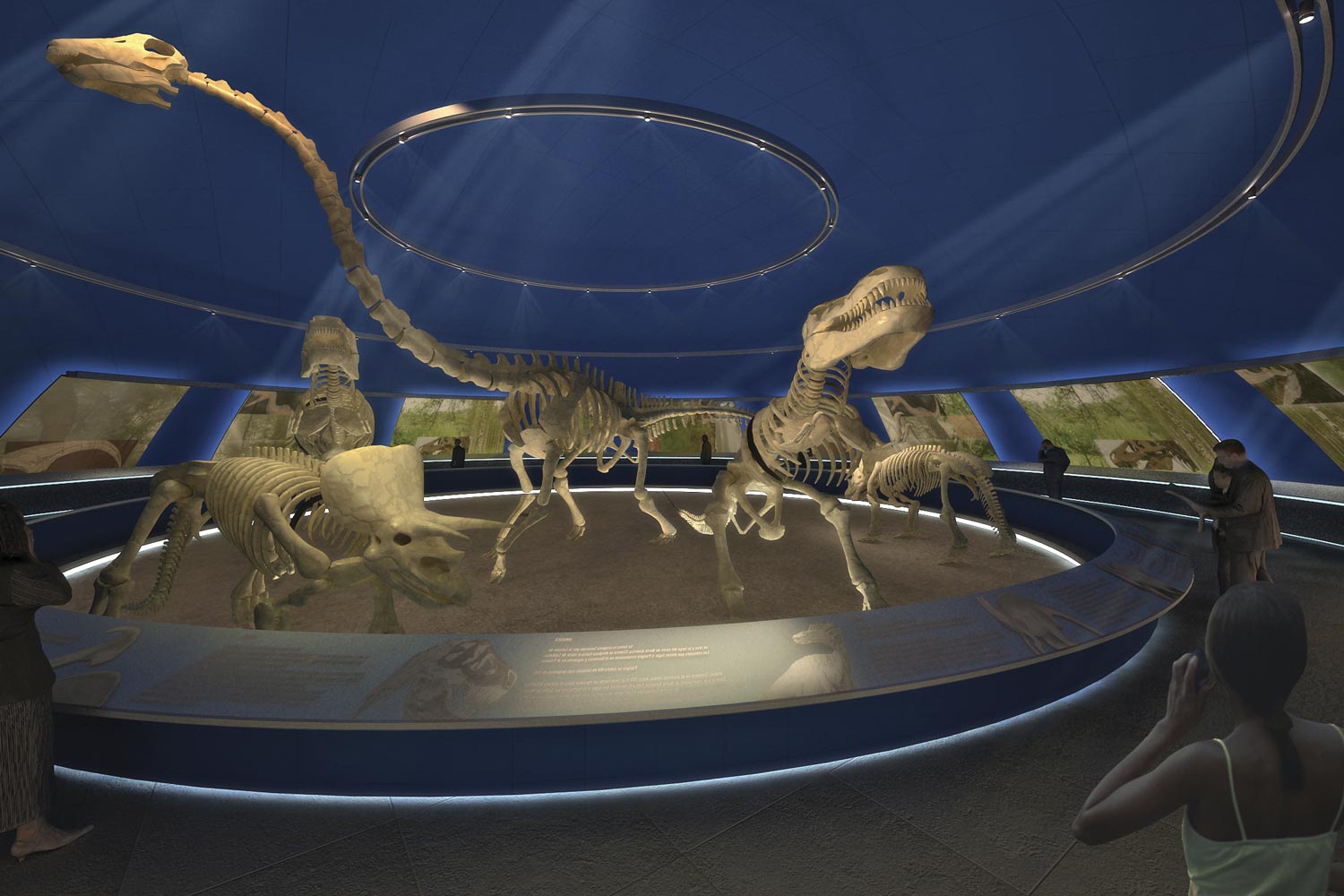Government of the State of Tabasco | Tabasco, Mexico
About the project
This museum is located in the capital of the state of Tabasco, a region with some of the most diverse flora and fauna in Mexico. The exhibitions contribute to the conservation of this richness by showing the role of man in the natural world and the aspects humans share with other inhabitants, encouraging visitors to evaluate the effects of their actions on the environment. The museum building houses five halls of different sizes and shapes, three in the lower level: “Earth”, “Life” and “Tabasco”; and two in the mezzanine: “Man” and “Resources”. The fluid spaces between the halls and the mezzanine open to the lower level, and offer long perspectives and diverse site lines to emphasize the interrelationship of the themes.
The exhibitions are conceived as a means of didactic communication about natural processes and natural phenomena. The “Earth” hall has a circular area and is organized around a moving earth globe. It represents a synthesis of the origin and formation of the universe and the Earth, showing its geological processes and characteristics. The “Life” hall, with a double height ceiling, is dominated by a replica of the skeleton of an allosaurus, representing the origin and evolution of life through the ages and geological epochs. The “Tabasco” hall shows the geographic and geologic particularities of the region, as well as its natural richness. The hall ends with a large double height diorama that recreates a fragment of jungle in real size, including specimens of its fauna. The “Man” hall shows the position of humans in the animal kingdom and a detailed exposition of their evolution, concluding with a group of figures around a woman holding a child, accompanied by her closest living and extinct evolutionary relatives. Finally, the “Resources” hall features the upper part of the jungle diorama which overlaps with the “Tabasco” hall, showing the exploitation of natural resources, from their use by pre-hispanic peoples, to current over-exploitation and the urgency for their more sustainable use.
The exhibitions are integrated with original and reproductions pieces of paleontological, prehistoric, geological, anthropological and flora and fauna, complemented by dioramas, models, scale models and diverse graphics, that display their themes in a clear, concise and friendly way.
